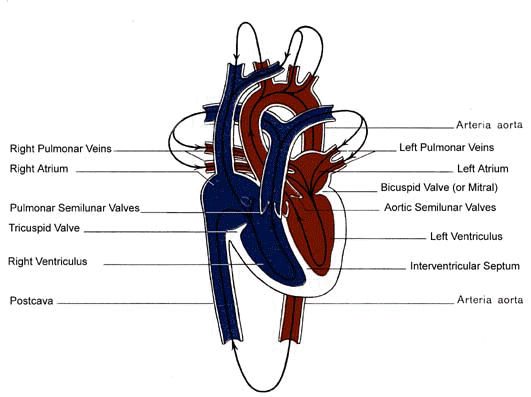
The
heart and circulatory system
The
heart is a hollow muscular organ that is a four-chambered pump with a one-way
valve system. It
receives dark blood from the veins into his right part and pumps it to
the lungs. Into the lungs the blood picks up supply of oxygen and become bright
red again. From the lungs the blood goes to the left heart and is ejected
forward into the arteries. The arteries divide into progressively smaller
branches to supply a microscopic network of capillaries, so distributing the
blood to every part of the body. Blood is collected by the veins again back to
the heart. Venous blood fills the heart as it relaxes during the interval
(diastole) between each contraction (systole). Each side of the heart has a
thin-walled collecting reservoir (atrium) which helps to fill the thick walled
major pump (ventricle). The heart wall is made of a special sort of muscle
called myocardium. Like every other living tissue, the myocardium itself needs
to be continuously supplied with fresh blood, through arteries that are in this
case called the coronary arteries. The heart beats automatically and pumps some
8000 litres of blood per day.

press
left arrow in your browser for previous page
[Home]
